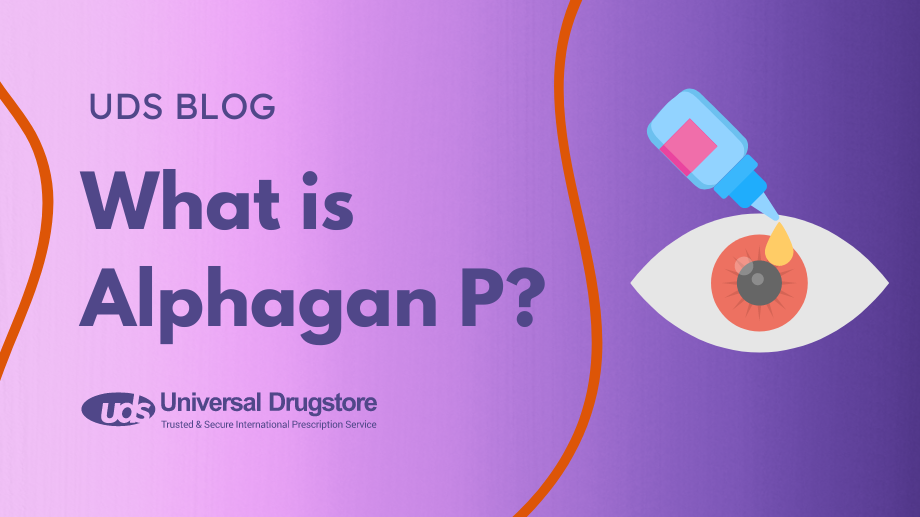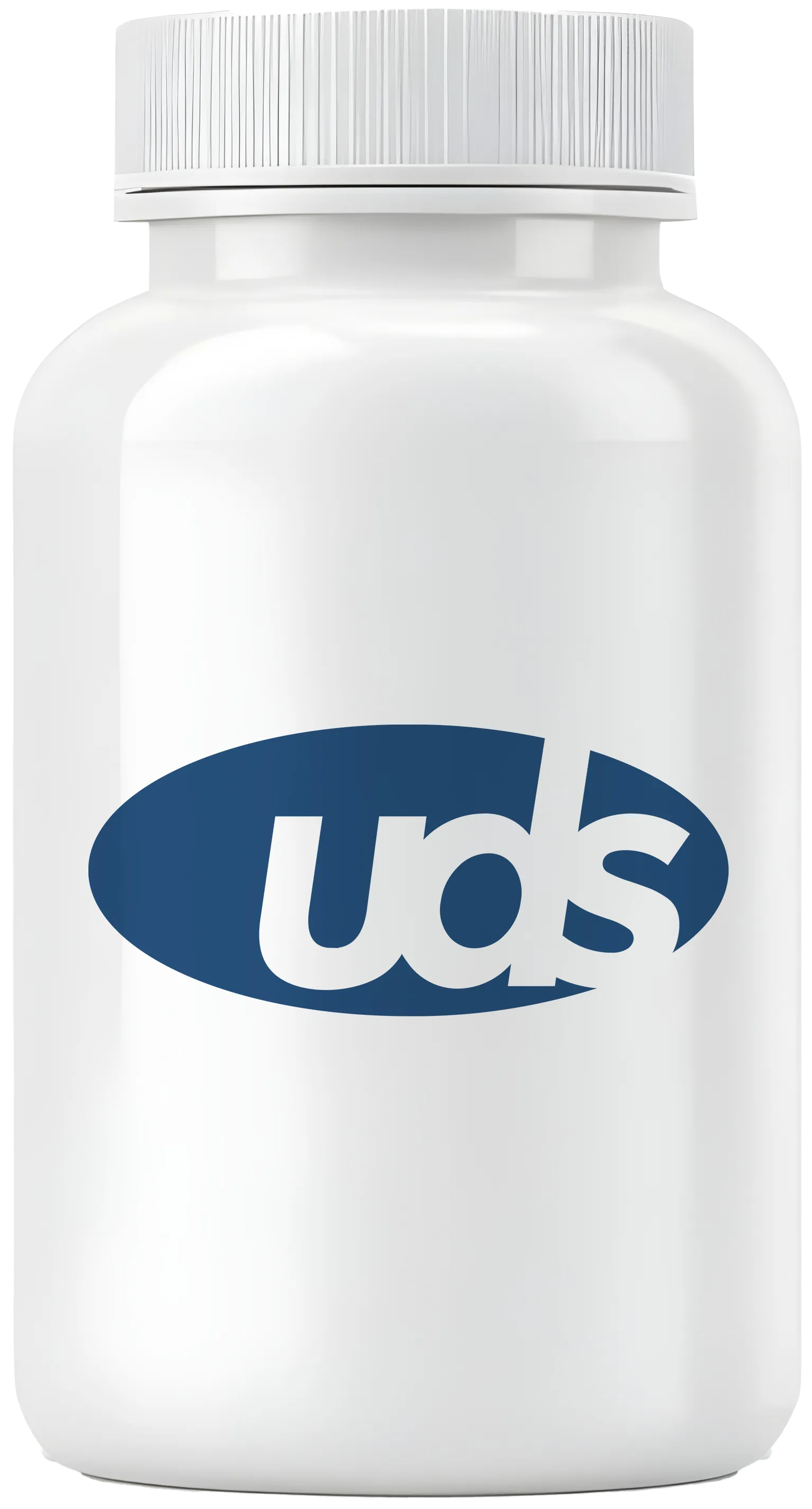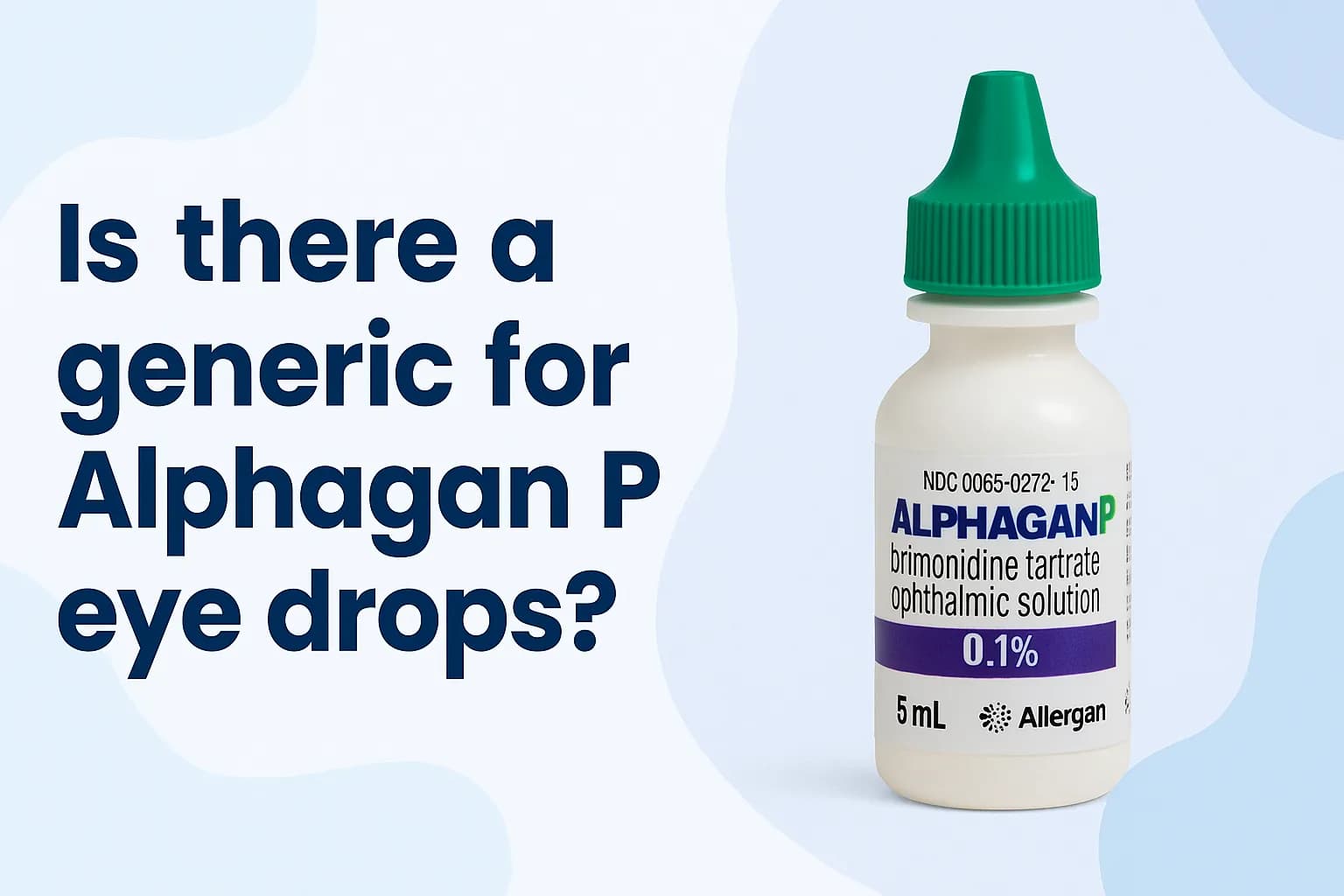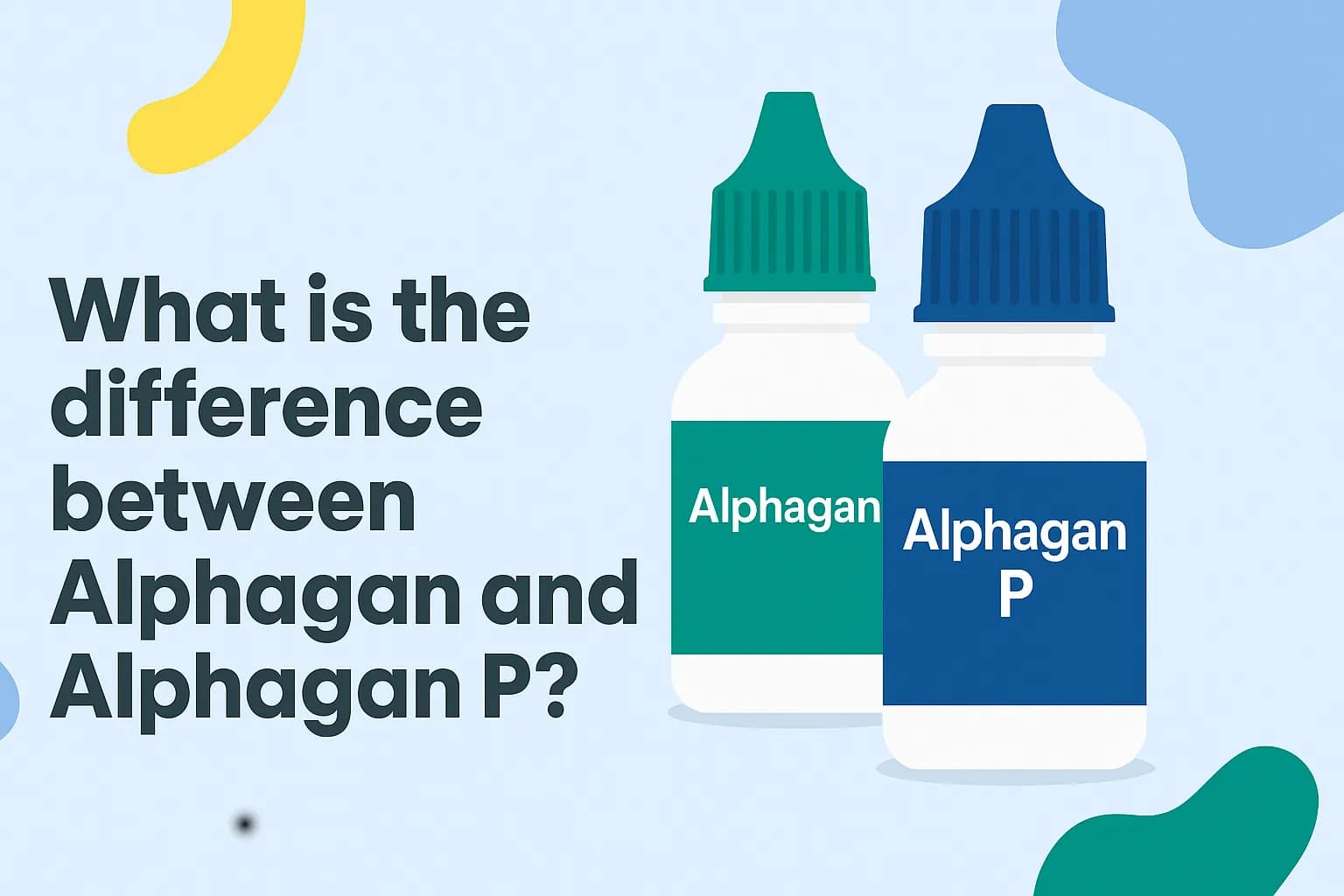What is Alphagan P?

Alphagan P (brimonidine) is a prescription eye drop that is typically used three times a day to relieve pressure in your eyes (ocular hypertension) and to treat open-angle glaucoma. Ocular hypertension and open-angle glaucoma are conditions that develop when the pressure within your eye increases. They occur when fluid does not drain out of your eye at its regular rate, resulting in a buildup that increases intraocular (within the eye) pressure. However, there is a key difference. With ocular hypertension, the optic nerve looks normal and there are no signs of vision loss. With open-angle glaucoma, the eye pressure builds and starts to damage the optic nerve. This type of glaucoma is painless and causes no vision changes at first. If glaucoma is not treated it can lead to serious problems, including total blindness. Untreated glaucoma is one of the most common causes of blindness.
In this blog, we will discuss Alphagan P’s common and serious side effects, what it is used for, potential drug interactions, and answer other frequently asked questions.
Alphagan P FAQs
What is Alphagan P used to treat?
Alphagan P is a brand-name brimonidine ophthalmic solution manufactured by Allergan. It is FDA-approved to reduce elevated intraocular pressure (IOP) in patients with open-angle glaucoma or ocular hypertension. It can be used in patients 2 years of age and older.
How does Alphagan P work?
Alphagan P contains the active ingredient brimonidine tartrate. It belongs to a drug class called alpha agonists. Alphagan P works by decreasing your body’s production of aqueous humor (type of fluid in your eye) and increasing the flow of this fluid out of the eye, resulting in a decrease in eye pressure.
What dosage forms are Alphagan P available in?
Alphagan P is available as a topical eye solution in the following strengths:
Eye dropper
- 0.1%
- 0.15%
How often should Alphagan P be used?
It is important to follow your healthcare provider’s instructions on how to use Alphagan P correctly. The usual recommended dosage is to place 1 drop in the affected eye(s) 3 times a day about 8 hours apart.
What are the side effects of Alphagan P?
While Alphagan P is generally well-tolerated, like any medication, it can cause side effects. The most common side effects of Alphagan P seen in clinical trials include:
- Oral dryness (dry mouth)
- Allergic conjunctivitis or conjunctival hyperemia (red eye)
- Eye irritation, burning, and stinging
- Eye pain
- Headache
- Blurred vision
- Feeling like there’s something in your eye
- Drowsiness or tiredness
- Small white patches on the inside of the eyelids
- Eye pruritus (itchy eyes)
- Dry eyes
Other side effects seen with Alphagan P include:
- Color change to or thinning of the cornea
- Light sensitivity
- Tearing
- Flu-like symptoms
- Dizziness
- Eyelid inflammation
- Upset stomach
- Weakness
- Pale or white eyelids
- Abnormal vision
- Muscle pain
- Slow, fast, or irregular heartbeat
While less common, some individuals may experience serious side effects while using Alphagan P. These side effects may require immediate medical attention. If you experience any of the following, contact your healthcare provider or seek emergency medical assistance:
Serious allergic reactions, which can be life-threatening. Symptoms can include:
- Hives
- Trouble breathing
- Swelling of the mouth, throat, and tongue
- Low blood pressure, especially upon standing (orthostatic hypotension)
Alphagan P should be used with caution if you have severe cardiovascular disease, blood vessel problems (thromboangiitis obliterans), Raynaud’s phenomenon, or low blood flow to your heart or brain.
Increased risk of infections from contamination
Alphagan P can cause bacterial keratitis, a bacterial infection of the cornea (the protective covering on the front of your eye) if the dropper gets contaminated. It is important to wash your hands before each use and be careful not to touch the tip of the dropper with your eye, hands, or any other surface.
Shop Medications
Damage to soft contact lenses
If you wear soft contacts, remove them before using Alphagan P. You should wait at least 15 minutes after using this medication before putting your contacts back in.
These are not all of the possible side effects of Alphagan P. You should always seek medical advice from your healthcare provider for any questions or concerns about your medical condition or treatment. Read all patient information, medication guides, or drug information sheets that come with this medication. You can also report adverse effects to the FDA at www.fda.gov/medwatch or 1-800-FDA-1088.
What drugs interact with Alphagan P?
Alphagan P may interact with other medications, supplements, or foods, potentially affecting its effectiveness or increasing the risk of side effects. It is important to inform your healthcare professional about all the medications, including prescription medications, over-the-counter drugs, vitamins, and supplements you are taking, including:
- Use with blood pressure-lowering medications such as clonidine and cardiac glycosides such as digoxin may cause a significant drop in your blood pressure.
- Use with beta-blockers such as atenolol or timolol eye drops can also increase your risk of low blood pressure.
- Use with CNS depressants (alcohol, barbiturates, opiates, or sedatives) may cause increased drowsiness.
- Use with tricyclic antidepressants such as amitriptyline may decrease the effectiveness of Alphagan P.
- Use with monoamine oxidase inhibitors such as selegiline and tranylcypromine may result in low blood pressure.
Who should not take Alphagan P?
Alphagan P is contraindicated if you have a known allergy to brimonidine, the preservative Purite, or any other inactive ingredients in this product.
You should also make sure your healthcare provider is aware of your medical conditions before you start taking Alphagan P, including:
- Those associated with vascular insufficiency such as depression, Raynaud’s phenomenon, orthostatic hypotension, low blood flow to your heart or brain, or thromboangiitis obliterans (blood vessel disease).
- Severe heart disease
- Pregnant or plan on becoming pregnant; Alphagan P should be used during pregnancy only if the potential benefit to the mother justifies the potential risk to the fetus.
- Are breastfeeding or plan to breastfeed; Alphagan P should be used during lactation only if the potential benefit to the mother justifies the potential risk to the fetus.
How long does it take Alphagan P to start working?
Alphagan P will typically start lowering your eye pressure within 2 to 3 hours after you use it. Your eye pressure is best controlled if you use this medication 3 times a day every day.
How should you store Alphagan P?
Store Alphagan P at room temperature between 59°F to 77°F (15°C to 25°C). It should be stored away from direct sunlight in a cool, dry place out of the reach of children.
What should you do if you miss a dose of Alphagan P?
If you miss a dose of Alphagan P, use it as soon as you remember. If it is almost time for your next dose, skip the missed dose. Use your next dose at the regular time. Do not double your dose to make up for a missed dose.
Can you use Alphagan P with other eye drops?
Yes, Alphagan P can be used with other eye drops, as long as your healthcare provider approves it. If you use more than one topical eye medication, the drugs should be given at least five minutes apart.
Related medications
- Trusopt (dorzolamide)
- Timoptic (timolol)
- Cosopt PF (dorzolamide/timolol)
- Combigan (brimonidine/timolol)
- Azarga (brinzolamide/timolol)
- Simbrinza (brinzolamide/brimonidine)
Sources
Medscape: https://reference.medscape.com/drug/alphagan-p-qoliana-brimonidine-343594#0
Alphagan P Prescribing Information: https://www.rxabbvie.com/pdf/alphagan_pi.pdf
PDR: https://www.pdr.net/drug-summary/?drugLabelId=51
DailyMed: https://dailymed.nlm.nih.gov/dailymed/lookup.cfm?setid=264c4494-c225-486f-888a-caaf36be46b3





